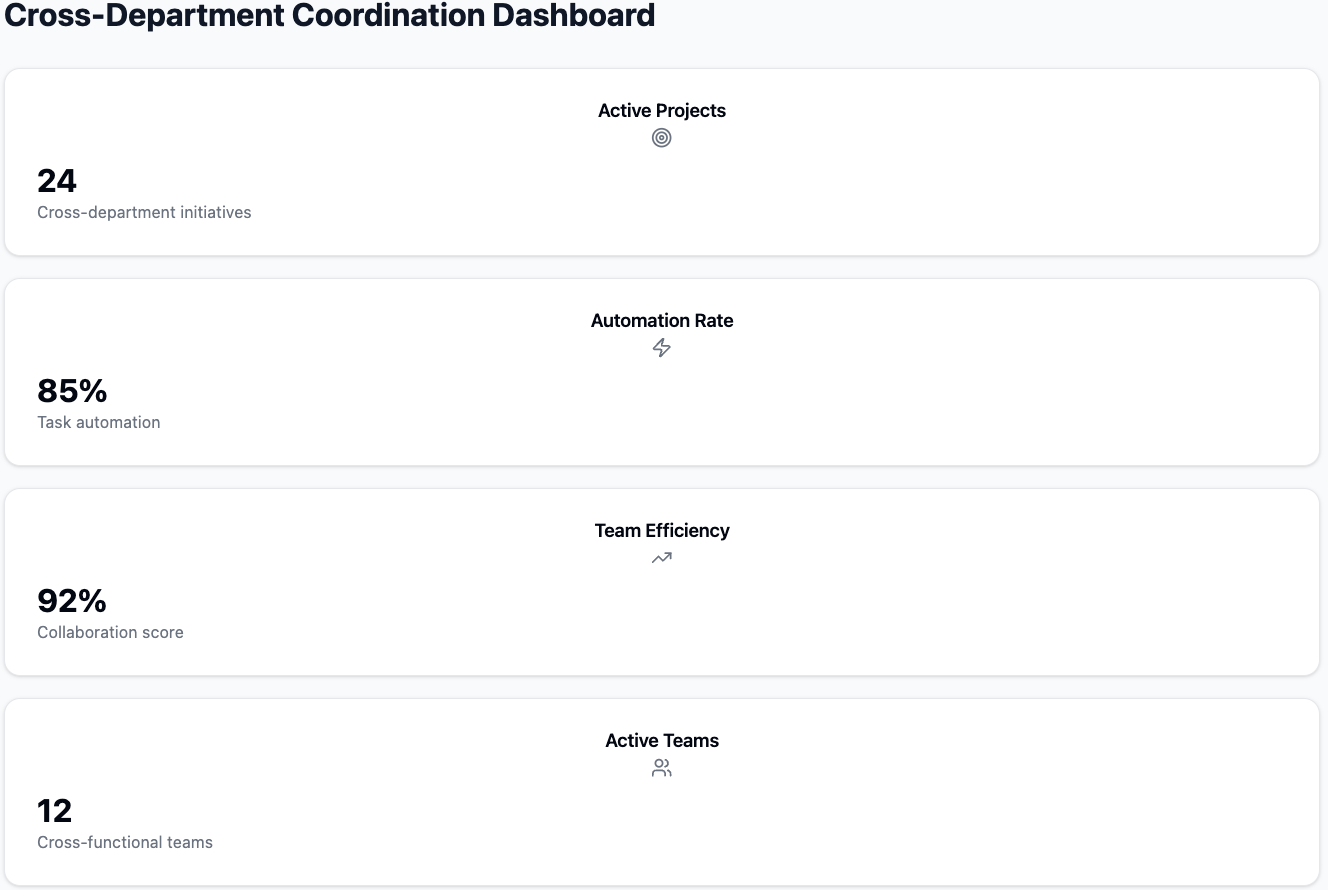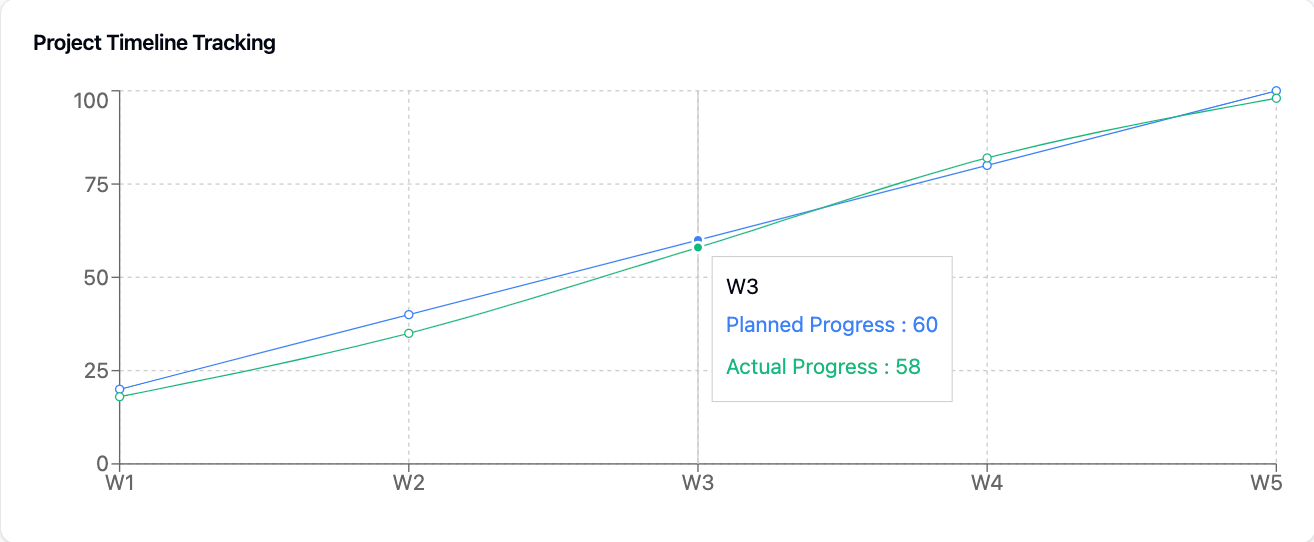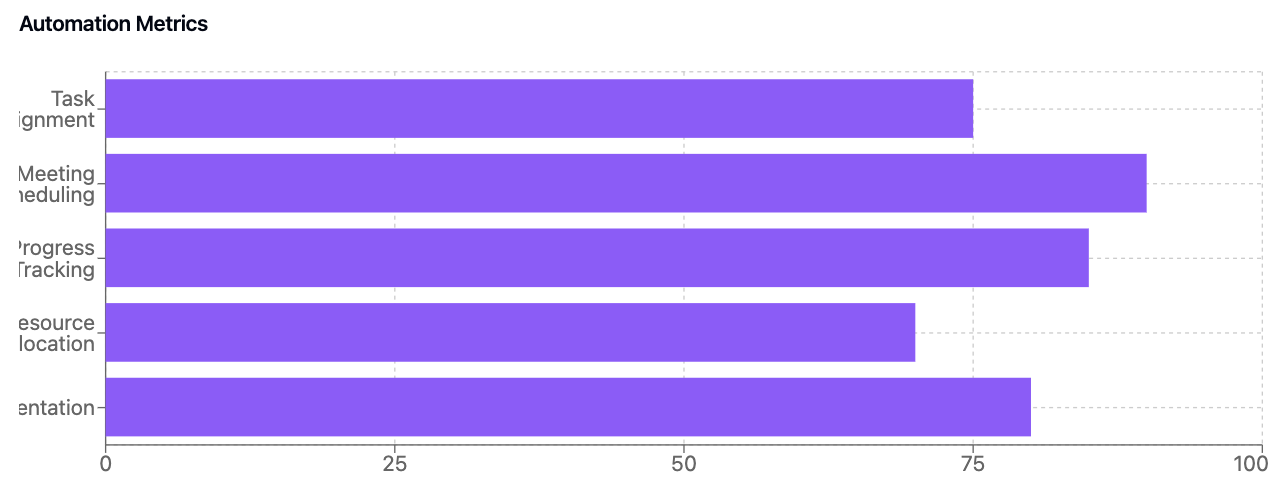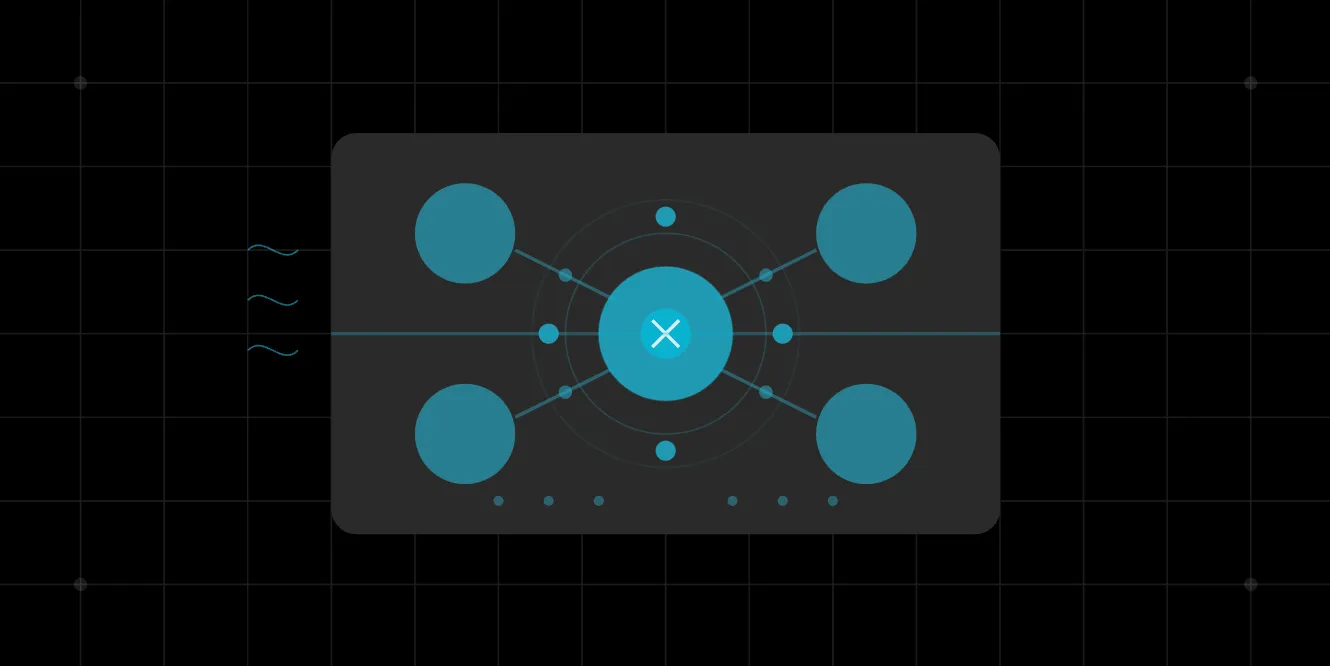Achieve Cross Department Coordination with AI Automation Effortlessly
Achieve Cross Department Coordination with AI Automation: Breaking Down Silos
In today’s complex business world, cross-department collaboration is more important than ever. Artificial Intelligence is the game-changer that’s breaking down silos and making teams work seamlessly together, especially in complex projects where AI helps teams navigate the complexities of their tasks. Cross-functional projects are crucial in fostering collaboration among diverse teams to tackle complex business goals. Let’s dive in to how AI is changing the way departments work together and why that matters for modern companies.
The Evolution of Cross-Functional Collaboration
Traditional cross-department collaboration suffered from communication gaps, misaligned priorities, and inefficient processes. AI is changing that by introducing intelligent automation that bridges the departmental divide and creates more unified and efficient companies.

The Importance of Cross-Functional Teams
Cross-functional teams are essential for driving business success in today’s fast-paced and competitive market. By bringing together individuals from different departments and functions, cross-functional teams can leverage diverse perspectives, skills, and expertise to solve complex problems, innovate, and improve processes. This collaborative approach enables organizations to stay agile, adapt to changing customer needs, and deliver personalized experiences at scale. When different departments work together, they can create more comprehensive strategies, streamline operations, and ensure that all aspects of a project are aligned with the company’s overall goals. This not only enhances efficiency but also fosters a culture of continuous improvement and innovation.
Challenges of Traditional Siloed Teams
Traditional siloed teams, on the other hand, can hinder business growth and innovation. When teams work in isolation, they often lack visibility into other departments’ goals, priorities, and workflows. This can lead to miscommunication, delays, and duplicated efforts, ultimately resulting in decreased productivity and missed deadlines. Moreover, siloed teams can struggle to respond to changing customer needs, leading to a lack of competitiveness and innovation. The absence of cross-functional alignment means that different teams may pursue conflicting objectives, wasting valuable resources and time. In a rapidly evolving market, this lack of cohesion can be detrimental to a company’s ability to stay ahead of the competition.

The Transformative Benefits
Communication Without Boundaries
AI-powered tools are changing how departments communicate and share information. With intelligent chatbots, virtual assistants and automated notification systems, teams can communicate without the friction that comes with cross-departmental interactions. Information flows seamlessly and all stakeholders are informed and aligned, regardless of department or location.
Additionally, AI tools can automate the updating of task progress and reminders for deadlines, helping maintain project organization.
Workflow Intelligence with AI Tools
One of the most powerful aspects of AI in cross-department collaboration is its ability to manage complex projects and workflows intelligently. These systems can:
-
Automatically assign tasks based on expertise and availability
-
Track progress across multiple departments
-
Ensure smooth handoffs between teams
-
Identify and resolve bottlenecks before they impact productivity
Data-Driven Decision Making
AI is great at synthesizing data from multiple departments to provide complete information that would be impossible to get manually. This enables leaders to:
-
Make decisions based on complete company information
-
See cross-departmental trends and patterns
-
Predict issues before they arise
-
Optimize resource allocation across teams

AI Tools for Cross-Functional Collaboration
Artificial intelligence (AI) can play a significant role in facilitating cross-functional collaboration. AI tools can help break down silos between departments, automate routine tasks, and provide real-time insights to inform decision-making. By leveraging AI, organizations can streamline workflows, enhance communication, and foster a culture of collaboration and innovation. These tools can analyze vast amounts of data from different departments, providing a holistic view of the organization’s operations and enabling more informed and strategic decisions. By automating repetitive tasks, AI frees up employees to focus on more critical and creative aspects of their work, driving overall productivity and business success.
Top AI Communication Collaboration Tools
Several AI-powered tools are available to support cross-functional collaboration. Some top tools include:
-
Xylo AI: A platform that uses AI to analyze email tone and context, reducing miscommunication and enhancing productivity. By understanding the nuances of communication, Xylo AI ensures that messages are clear and effective, minimizing the risk of misunderstandings.
-
Slack with ChatGPT: A tool that integrates AI-powered chatbots into Slack, enabling teams to automate tasks, answer questions, and provide support. This integration allows for seamless communication and task management within the platform, making it easier for teams to stay aligned and productive.
-
Microsoft Copilot: A platform that uses AI to analyze data, provide insights, and automate workflows, enhancing collaboration and productivity. Microsoft Copilot helps teams make data-driven decisions and streamline their processes, ensuring that projects are completed efficiently and effectively.
Features of Effective AI Tools for Cross-Team Collaboration
Effective AI tools for cross-team collaboration should possess several key features, including:
-
Natural Language Processing (NLP): The ability to analyze and understand human language, enabling teams to communicate more effectively. NLP can interpret and respond to queries, making interactions with AI tools more intuitive and user-friendly.
-
Machine Learning Models: The ability to learn from data and adapt to changing workflows, enabling teams to automate routine tasks and make data-driven decisions. These models can identify patterns and trends, providing valuable insights that can inform strategic planning and execution.
-
Real-Time Insights: The ability to provide real-time insights and analytics, enabling teams to monitor key metrics and make informed decisions. Real-time data allows teams to respond quickly to changes and ensure that projects stay on track.
-
Automation: The ability to automate routine tasks, enabling teams to focus on high-priority tasks and enhance productivity. Automation reduces the burden of repetitive tasks, allowing employees to dedicate more time to innovative and strategic activities.
-
Cross-Functional Alignment: The ability to align teams across different departments and functions, enabling organizations to drive business success and innovation. By ensuring that all teams are working towards common goals, AI tools help create a cohesive and collaborative work environment.
By leveraging AI tools with these features, organizations can enhance cross-functional collaboration, drive business success, and stay ahead of the competition. These tools not only improve efficiency and productivity but also foster a culture of innovation and continuous improvement, ensuring that companies can adapt and thrive in a rapidly changing market.
Real World Applications
Smart Project Management
Modern AI-powered project management tools are changing how cross-functional teams work together. Cross-functional projects play a crucial role in enhancing communication and reducing misunderstandings by involving all relevant stakeholders early on, fostering collaboration among diverse teams to tackle complex business goals:
-
Automated task assignment based on skills and availability
-
Real-time progress tracking across departments
-
Intelligent resource allocation
-
Predictive analytics for project outcomes
Meeting Optimization and Monitoring Key Metrics
AI is changing how cross-departmental meetings are run:
-
Automatic scheduling based on participant availability
-
Smart agenda generation based on project priorities
-
Automated action item tracking and follow-up
-
Meeting summarization and distribution
Customer Experience Enhancement
AI is improving coordination between customer-facing departments:
-
Unified customer journey mapping
-
Integrated feedback analysis
-
Coordinated response strategies
-
Predictive customer needs analysis
Effective marketing campaigns necessitate collaboration across different departments to create a holistic message that appeals to the target audience.
Training and Development
AI is facilitating cross-department learning and growth:
-
Personalized training recommendations
-
Cross-department skill development tracking
-
Knowledge sharing platforms
-
Expertise matching across departments
A cross-functional marketing team plays a crucial role in developing effective marketing campaigns and brand strategies, emphasizing collaboration among members from various departments to create a compelling message that resonates with the target audience.
How to Implement
To implement AI-powered cross-department coordination:
- Assess Current State
-
Evaluate current coordination processes
-
Identify communication gaps
-
Map cross-department workflows
-
Define improvement goals
- Choose the Right Tools
-
Select tools that integrate with existing systems
-
Scale across departments
-
User-friendly interfaces
-
Customization needs
-
Involve marketing teams in the selection and implementation of AI tools to ensure collaboration among design, social media, analytics, and sales departments
- Prepare the Organization
-
Comprehensive training
-
Clear protocols
-
Define roles and responsibilities
-
Support systems
- Monitor and Refine
-
KPIs
-
Feedback from all departments
-
Refine processes
-
Adapt to changing needs
The Power of Predictive
AI’s predictive capabilities are particularly powerful in cross-department coordination:
-
Resource forecasting across departments
-
Collaboration opportunities
-
Project bottlenecks
-
Proactive interventions
-
Resource optimization
Future
As AI evolves we’ll see:
-
More advanced natural language processing for communication
-
Cross-department planning
-
Virtual and augmented reality integration for collaboration
-
Automation of complex cross-department workflows
-
Personalized AI assistants for team coordination
A Collaborative Future
AI-powered cross-department coordination is about:
-
Creating a collaborative culture
-
Breaking down silos
-
Data-driven decision making
-
Simplifying complex processes
-
Innovation through better collaboration
Conclusion
AI-powered cross-department coordination is a fundamental change in how companies work internally. By providing better communication tools, streamlined workflows, and data-driven insights, these systems help companies achieve unprecedented efficiency and effectiveness in their cross-departmental activities.
The key is to see AI not as a replacement for human collaboration but as a powerful enabler that helps us work together. Companies that adopt these technologies while staying focused on their core will thrive in a complex business world. Companies must adopt AI-powered cross-department coordination now.
